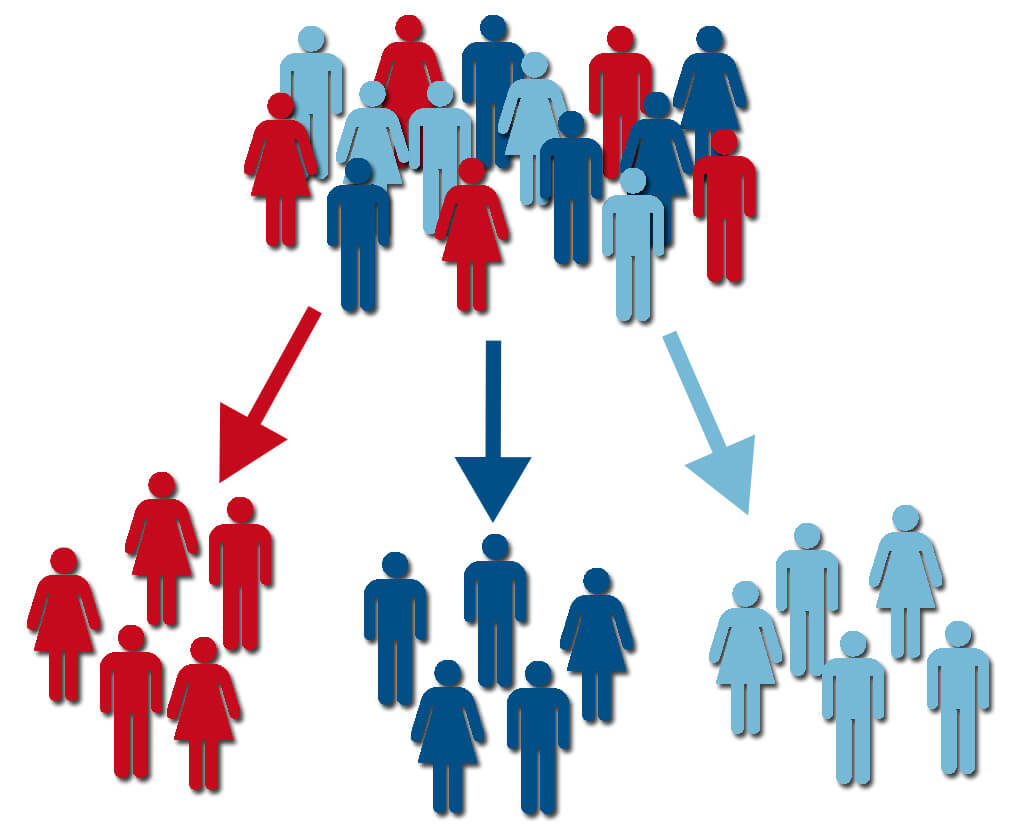If your fitness studio or gym doesn’t already use email marketing, then you are probably missing out on new customers and more than a few sales opportunities! Fitness studios need to use email marketing in order to increase memberships and brand awareness.
In fact, alongside your referral marketing strategy, email marketing is one of the easiest (and most cost effective) ways you can build your business.
It is no secret that fitness studios everywhere are using email marketing to successfully:
- Convince current customers to make new purchases
- Encourage customer loyalty and repeat business
- Enhance relationships with your current or previous customers
- Increase new leads or customers
In this article, we will show you how to use email marketing to build loyalty, trust and brand awareness. All it takes is some time and willingness try something new.
Even if you already use email marketing, keep reading, since we might have a few cool ideas which you could include in your email marketing plan.
Email marketing software for fitness studios
While anyone can start sending emails to their clients using popular email programs like Gmail, for the very best results, and scalability, you will need to use a dedicated email marketing service.
Here are 4 highly rated email marketing services which we found by searching online that include free plans.
- Sendinblue
- Mailchimp (recommended by us)
- MailerLite
- Moosend
Dedicated email marketing services are purpose built to help you to build and organize your contact list, design and send engaging newsletters, and can automate emails to be sent based on different criteria.
If you are new to email marketing services then we recommend starting with a service like Mailchimp since it is free for up to 2000 contacts and 10,000 sends per month. This is more than enough for many fitness studios and if you need to upgrade then the option is there too.
Bookamat booking software for yoga, Pilates and Fitness studios is also integrated with Mailchimp. This means you can send newsletters and emails to your Bookamat client list directly from your Mailchimp account. We also use Mailchimp for our email marketing and can honestly say it has benefited us tremendously.
So without further ado, here are our simple email marketing tips used by fitness studios everywhere.
1. Create and send engaging newsletters
Newsletters are an essential email marketing tool connecting fitness studios with their customers. Plus they are an integral part of email and content marketing campaigns. You can use newsletters to inform your customers of any upcoming specials and events. You can even use newsletters to up-sell your products.
Inform your customers of any changes in your trading hours, especially on public holidays and festive season hours. And provide readers with educational content related to your brand / business to create a connection with your customers.
You should aim to send out at least one newsletter a month, but preferably one a week. Consumers signed up for these emails, so it’s important to give them what they want.
44 percent of email subscribers made at least one purchase based on a promotional email they received in 2015. And, even better, people who make purchases marketed through emails spend 138% more than people who do not receive emails.
2. Use audience segments
So, you have a list of contacts and can send them all newsletters, great! Now thinking about your list, you might want to send specific content to a subset of that list only. For example, if you are adding a Yoga class for women, then you might not want to send it to the men in your audience. Creating audience segments helps you organize and group your contact list by category or theme etc.

You can use segmentation to view grouped contacts and send them emails or ad campaigns based on their interests, purchases, and other criteria they have in common. When you send an email campaign to a segment, they’ll only send to subscribed contacts who meet your criteria.
Here are some audience segment ideas you could use:
- Clients who haven’t made a purchase for [x] months
- Gender based segments for targeting gender specific classes
- Age based segments for targeting classes for the elderly
- Mothers or parents with children
- Clients who attend specific class types, e.g. Yoga or HIIT
Here is the Mailchimp guide on setting started with segments: Getting Started with Segments (mailchimp.com)
3. Automate your email marketing
One of the greatest features of email marketing software is the ability to automate. This means emails can be automatically sent to customers when they interact (or don’t) with your business. Not only is this a huge time saver for any business, but it also helps to build brand awareness.
Here are some automated email examples you could create:
- Welcome emails to your new clients to add a personal touch
- E-commerce product emails about new stock for purchase
- Thank you emails after 3, 6 or 12 months of joining your studio
- Discounts for clients who haven’t interacted with your previous email campaigns
Data shows automations can generate up to 6 times more orders than bulk email alone! Here is a link to getting started with Mailchimp automation: Automation Overview – Mailchimp
4. Create ongoing email drip campaigns
If you are ready to take your automated emails to the next level, it’s time to try drip campaigns! Drip campaigns are simply a series of automated emails sent to people who take a specific action. These emails can then be personalized with the person’s name as well as a specific reference to the action they took on your page.
For example, a drip marketing campaign can be based on a customer making a purchase or attending an event or class at your studio. If you offer an online shop, they can also be based on customers abandoning a shopping cart, engaging with customer service or not placing an order for an extended time.

The drip refers to sending slow and steady amount of emails over a period to keep in touch on that specific topic, without over-communicating. It also makes it easy to connect with the right person at the right moment—without doing the work every time. Here is Mailchimp’s guide to creating drip email campaigns.
Here is an example of a simple email drip campaign which you could create using Mailchimp:
- Welcome email sent to new client on registration
- Products email sent 24 hours after the welcome email was sent showcasing your online shop
- How are we doing email sent 6 months after the welcome email to elicit feedback
- Thank you for being part of the family email sent 12 months after the welcome email
It can seriously help boost your sales as well as build a relationship with your customers. More than 90% of consumers say they’re more likely to buy from companies that recognize and remember them.
5. Use email marketing to send feedback requests
Asking for customer feedback gives valuable insight into how your customers perceive your brand or business. Whether it’s positive or negative, you can use this information to adjust and provide a better experience for them next time they interact with your studio or gym.
Take your experience as a consumer yourself, to think of how you’d make the process easy and less time-consuming for your customers to complete the survey. Keep your feedback form to a maximum of 1 to 3 minutes to complete.
Adding a feedback request into your drip campaign also gives you an opportunity to obtain feedback without going to a lot of effort.
Here is the Mailchimp guide on how to create a survey or poll: Use Surveys in Mailchimp
6. Detailed marketing analytics report
Lastly, it’s important to use reporting in order to see what’s working for your business and what isn’t. For example, Mailchimp helps you keep tab on all of your campaigns, emails, social ads and emails. Their statistics show in real time, so that you can quickly identify if something needs to be changed.
Their reports also show the growth, engagement and revenue reports to help you see who has interacted with your marketing. Also to see whether they’ve clicked, bought, or downloaded so that you can use this to set up your drip campaign.
Mailchimp reporting also compares your marketing to your peers so that you can see how you stack up against your competition. And lastly it also shows your ROI with their detailed revenue reports so that you can track sales from a click in your campaign all the way to purchase!
In summary
Fitness studios everywhere are using email marketing to increase brand awareness, boost sales and enhance customer relationships. Creating an email marketing plan is easy with the use of email marketing services like Mailchimp which is conveniently integrated with Bookamat.
If you are just getting starting with email marketing, begin with the basics like audience segments, or creating and sending regular a newsletter. As you become more confident with email marketing services you can explore automated drip campaigns, automations and more!
The pros
Email marketing is highly cost effective. Fitness studios using Bookamat + Mailchimp can send up to 10,000 emails per month for free. Mailchimp also helps you gather information about the behavior of your customers. For example you can see which emails recipients opened, and links they click on to understand their buying habits.
The cons
Don’t forget there are risks to email marketing to be mindful of. People receive an ever increasing number of emails per day causing email fatigue. Sending your customers too many emails could have a negative effect on your brand.
Also remember that companies must make sure not to violate spam laws. Here is a full list of spam laws per country from Wikipedia: Email spam legislation by country – Wikipedia.
Happy emailing!




February 3, 2022
[…] advertising doesn’t have to mean paid either. Sending out email campaigns, producing blog posts or uploading Instagram content using hashtags is a cost-free way to start […]